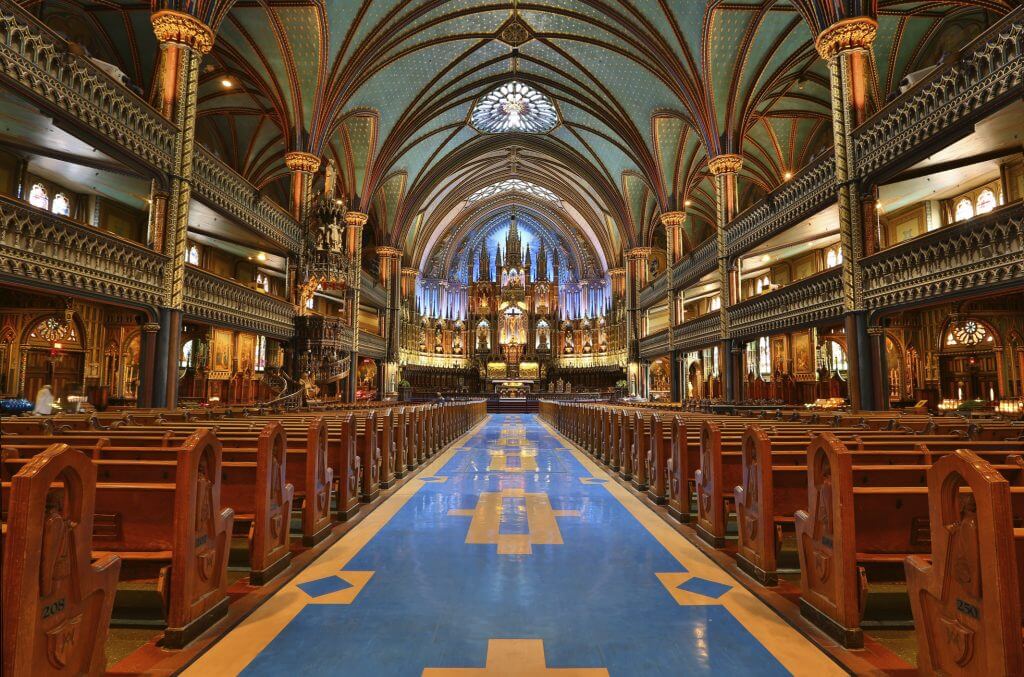Holy Thursday is chockablock full of theological significance and has a liturgy whose richness is rivaled only by the Easter Vigil celebration. On this feast that marks the end of Lent and the beginning of Holy Triduum (Good Friday, Easter Vigil and Easter Sunday) , the Church celebrates two distinct liturgies. The first is the Chrism Mass, traditionally celebrated in the morning at the cathedral by the bishop along with as many of his diocesan priests who can attend. It is at this Mass, which commemorates the institution of the sacerdotal priesthood, that the bishop consecrates the holy oils which will be used during the following year for Baptism, Confirmation and Anointing of the Sick.
In the evening, individual parishes offer the Mass of the Lord’s Supper, which commemorates Christ’s institution of the Holy Eucharist in the Upper Room. This second liturgy of the feast day begins in the evening because Passover began at sundown. The Mass ends with the ceremonious “stripping of the altar,” in which all sanctuary linens are gathered up, the church bells are silenced, and the Holy Eucharist is removed from the tabernacle and placed on a temporary “altar of repose” away from the sanctuary. When the Eucharist is processed to the altar of repose, the faithful traditionally remain in quiet prayer and adoration during a period called “the watching.”
An excellent traditional Holy Thursday devotion, credited to St. Philip Neri, grew out of this “watching.” For centuries Catholics in many parts of the world – especially Italy, Poland, Mexico, and the Philippines – have been visiting seven churches in their diocese on Holy Thursday after the Mass of the Lord’s Supper. This pilgrimage practice originated in Rome, where the faithful visited the seven Roman basilicas, saying prayers and “watching” in adoration at each. They are: St. John Lateran, St. Peter’s, St. Mary Major, St. Paul-outside-the-walls, St. Sebastian, Santa Croce-in-Jerusalem, and St. Lawrence-outside-the-walls.
The pilgrimage to each church corresponds to the seven “stops” or “stations” of the via crucis that were made by Jesus on his way to Calvary:
Jesus in the Garden of Gethsemane (Luke 22: 39-46)
2nd Visit: Jesus bound and taken before Annas (John 18: 19-22)
3rd Visit: Jesus taken before the High Priest, Caiaphas (Matthew 26: 63-65)
4th Visit: Jesus taken before Pilate (John 18,35-37)
5th Visit: Jesus taken before Herod (Luke 23: 8-9; 11)
6th Visit: Jesus taken before Pilate again (Matthew 27: 22-26)
7th Visit: Jesus given the crown of thorns and led to his crucifixion (Matthew 27: 27-31)
Especially if you live in an urban area, the Holy Thursday visitations are an excellent grace-filled way to end Lent and enter into the Triduum. Here’s the simple devotional exercise that Romans have been practicing for centuries. Upon entering each church, visit the altar of repose, kneel, make the sign of the cross, read the appropriate scripture reading for each “station” (above). Each visit ends with five Our Father’s, five Hail Mary’s and five Glory Be’s. After this, spend a few minutes in private prayer and adoration before moving on to the next church. Finally, at the seventh church, you can end the pilgrimage with a holy hour and prepare to enter into the Easter season in three days time.


